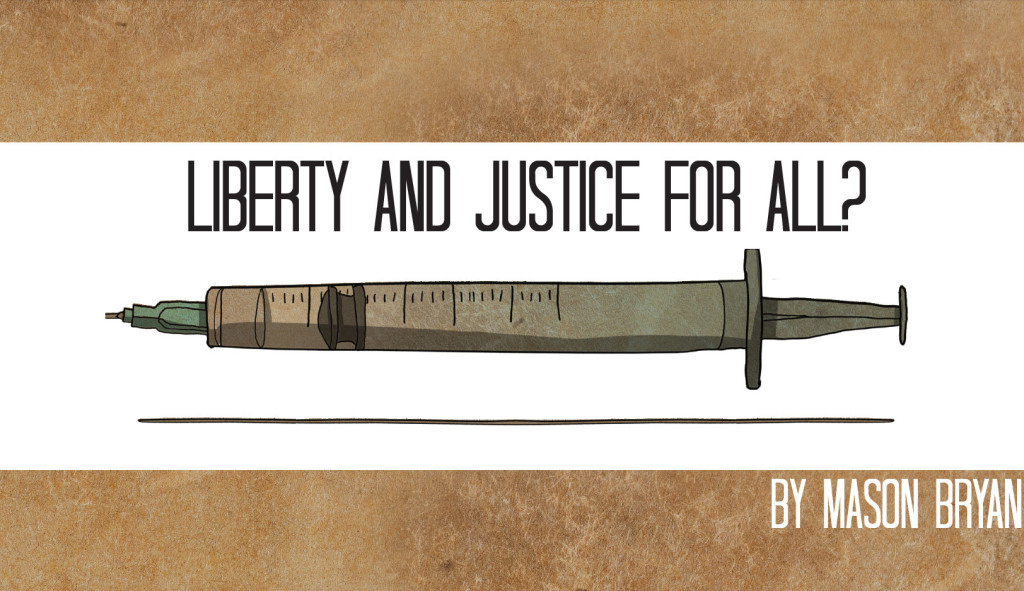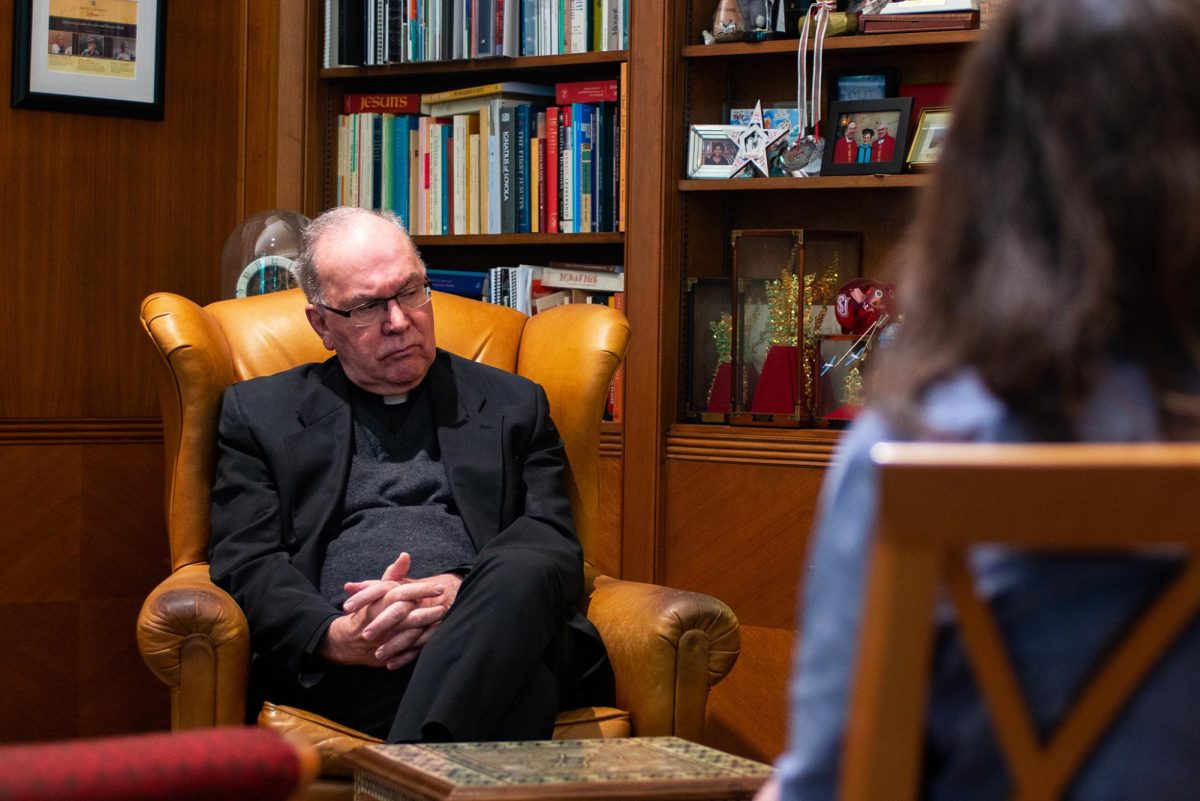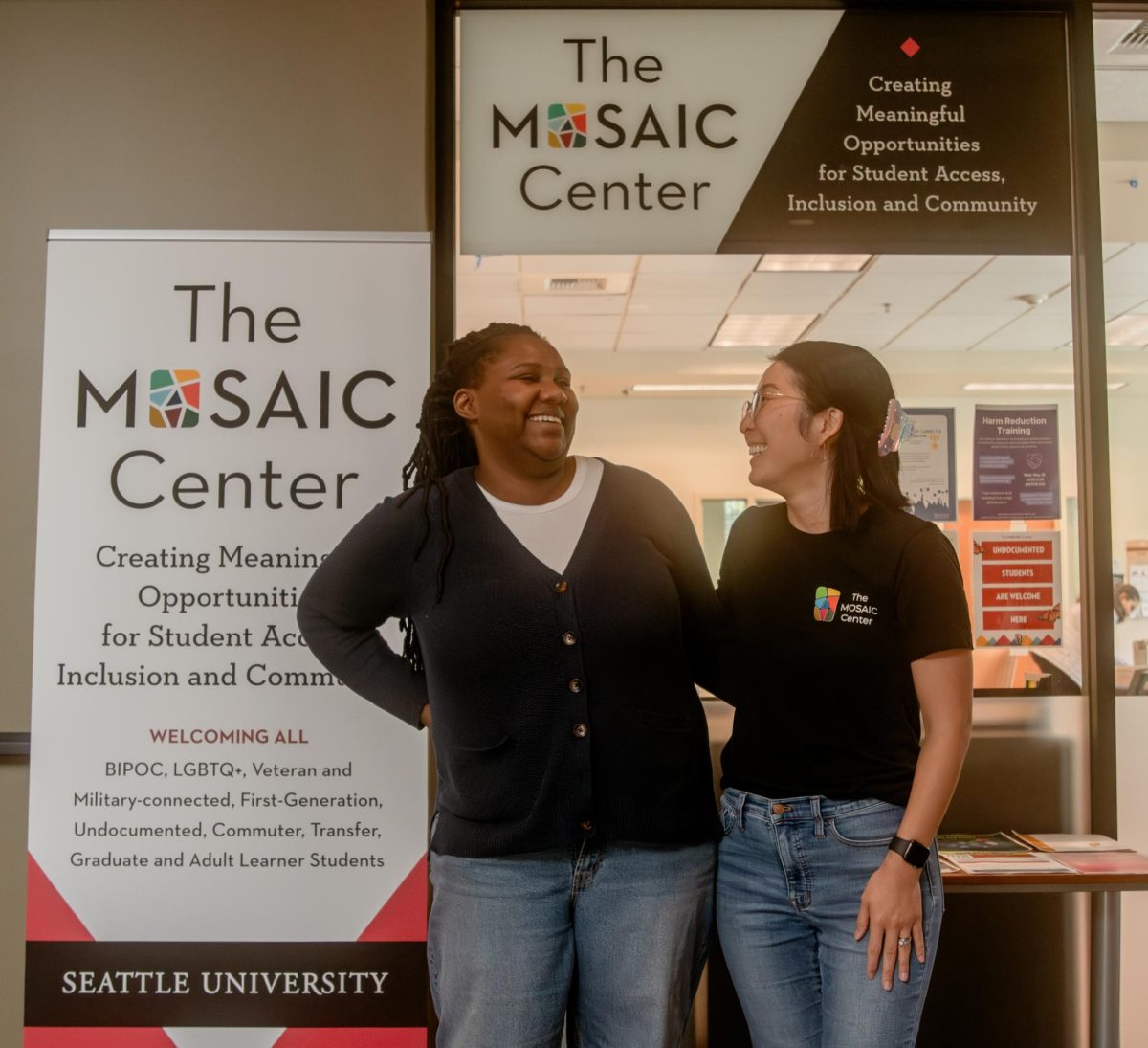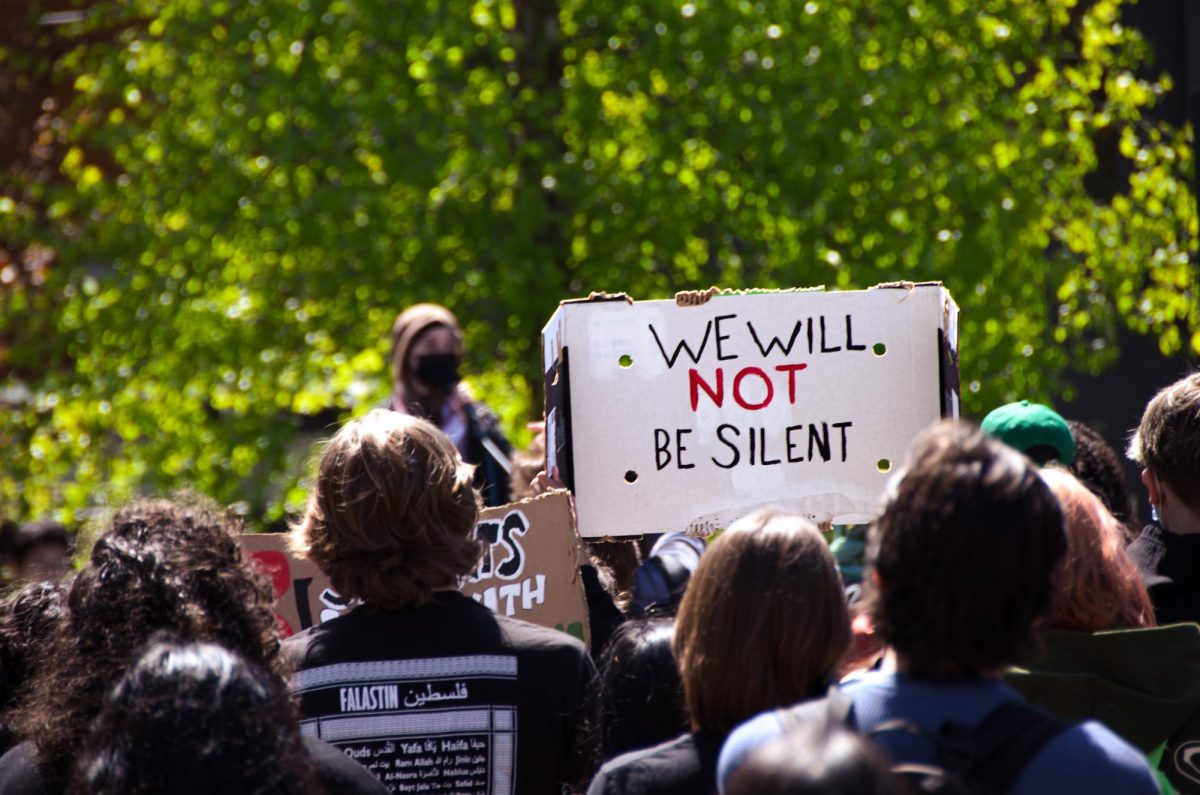
Christopher Monfort, a mixed-race man who identifies as black, is a defendant in one of two death-penalty trials that began last week at the King County Superior Court. He is charged with a slew of violent crimes, including, but not limited to, the alleged killing of Seattle police Officer Timothy Brenton and the firebombings of police vehicles at a Seattle parking facility.
The motivation for his crimes—he is pleading not guilty by reason of insanity—is said to be rooted in his obsessive concern with police brutality against citizens. One such case is that of a King County sheriff’s deputy who punched a 15-year-old girl and threw her to the floor of a holding cell at SeaTac City Hall in 2008.
The defense team has already spent nearly $4 million on the case, but the prospect of Monfort’s death as punishment for his violent crimes signals remarkable costs still to come.
According to a new study released earlier this month by Seattle University and conducted by professors from the criminal justice department and the School of Law, pursuing the death penalty for aggravated homicide in Washington state costs over one million dollars more than when the death penalty is not sought.
The explanation for the high costs is multi-faceted. One of the principal authors of the study, Robert Boruchowitz, director of The Defender Initiative and a Seattle U law professor, said that the United States Supreme Court and the Washington Supreme Court have made decisions that have intensified the complexity of death penalty law. Broadly speaking, these decisions have required that all players involved in a capital trial—judges, prosecutors, defense lawyers, and so on—spend more time being careful and comprehensive along the way. The stakes, Boruchowitz implied, are too high not to be.
“To preserve a fair system that includes due process and effective representation, I don’t think you can do it less expensively,” Boruchowitz said.
But Boruchowitz and his co-authors were not concerned with questions of fairness in their analysis, and the study even explicitly notes that they were uninterested in making “normative assumptions as to the social utility of the death penalty.” The focus, the authors said, centered entirely on the economic costs.
“We really made a decision that we were going to go where the data took us,” Boruchowitz said. “Any preconceptions we had we put aside.”
The study arrives nearly a year after Governor Jay Inslee issued a moratorium on capital punishment in Washington state. His rationale for the decision did include the high costs of pursuing the death penalty, but he also cited concern that the ultimate punishment was not being applied equally in all cases—a troubling fragment of a flawed system, he suggested, and one that merits a decision to issue a reprieve for any death-penalty case that reaches his desk while he remains in office.
On Monday a bipartisan group of lawmakers in Olympia introduced a bill to abolish the death penalty. This move, along with Governor Inslee’s decision, has situated Washington state in a growing chorus of death-penalty opponents in the U.S. unsettled by what they call systemic failures—and, in some cases, moral abominations—in how justice is delivered, or not delivered, in capital cases.
A handful of executions by lethal injection has been botched, amounting to what some call death by torture. State secrecy about the type of drugs sometimes used for lethal injection has brewed concern and outrage among criminal justice reformers, civil rights advocates and citizens alike. (The U.S. Supreme Court decided Friday to take up the issue). Oftentimes, defendants in capital trials are provided with substandard, even incompetent, public attorneys. And racial disparities in the application of the death penalty are widely documented in Washington state and across the country. According to the Southern Center for Human Rights, “Virtually all of the people selected for execution are poor, about half are members of racial minorities, and the overwhelming majority were sentenced to death for crimes against white victims.”
And some of the condemned may be wrongfully convicted. Researchers from two Michigan law schools recently found that at least 4.1 percent of all defendants sentenced to death between 1973 and 2004 are innocent.
“You like to feel that there would have been some certainty of justice that goes on with these [cases], but they get strung out for forever and a day, they end up costing a lot of money, and then it gets applied so hit and miss,” said Stephen Sype, who has worked in the Washington state Department of Corrections as a community corrections officer for 40 years. “There is no certainty at all.”
The list of death penalty complications does not end there. But these alarming realities raise profoundly important questions about the way we handle the distribution of justice in our civilized society. And since hearings in two capital trials began in Seattle last week, this discussion is timely, vital and, frankly, terrifying. To contemplate our capital punishment regime critically and fairly is to look deep within ourselves and come face to face with some harsh truths.
Seattle U Dean of Theology and Ministry Mark Markuly told me that most religious traditions assume the flawed nature of every human being. The Calvinists, for example, have recognized the need for the church to be perpetually reformed to account for these human flaws.
But Markuly said that recognition of these flaws, at least in American society, seems sparse. Some of us pretend like they’re not there, or we simply don’t see them, he said. And that becomes reflected in our institutions.
“When we get together you’re magnifying the flaws,” Markuly said. “That’s part of the imperfect nature of the human condition.”
Of course, the flaws that color the American condition are not difficult to identify—just consider our long history of racism. Demonstrating how these flaws influence our justice system with scientific certainty, however, has not always been easy. But a growing body of psychological research is beginning to offer insight into long-held assumptions about the association between racial stereotypes and crime. Jennifer L. Eberhardt, a social psychologist from Stanford University and recent winner of the MacArthur Foundation “genius” fellowship, found that African-American defendants are more likely to be condemned to death if their facial characteristics are perceived to be more “stereotypically black” and if their victims are white.
If bias and prejudice are strands of America’s DNA, then it shouldn’t surprise us that meting out justice is sometimes influenced by bias and prejudice. The obvious problem, as Eberhardt and significant amounts of social science have shown, is that this opens up the opportunity for harsher penalties to be doled out for certain people in certain conditions.
“If you’re an African-American man, the likelihood that you’re going to get a really harsh sentence for whatever crime is much, much higher,” Markuly said.
Meanwhile, all of this exists within a uniquely American paradox. Violent crime rates are down, but we still incarcerate our citizens at an increasingly higher rate than any other country in the world.
The reasons why are debated ad nauseam. Some argue convincingly that because of our hugely privatized prison system, there is an economic incentive to put, and keep, people in jail. But other observers say the answer may be simpler, and it involves what might be our most insidious flaw of all: fear.
David Jr. Ward, a black man from a socioeconomically impoverished county in North Carolina, was tried by the state for the alleged murder of a woman on a spring night in 1991. Prosecutors tried Ward and his accomplice separately.
Both were convicted of first-degree murder, but the accomplice, a man with lighter complexion and the presumed leader in the attack, received life in prison without parole. Despite considerable mitigating circumstances that his accomplice did not share, notwithstanding Ward’s immediate cooperation with the police, Ward was sentenced to death.
His defense team was comprised of two lawyers, both of whom had asked the judge not to assign them the case (one of the lawyers had not tried a capital case in over 25 years, and the other had only recently graduated from law school). Ward was tried by an all-white jury, which included one juror who knew the husband of the woman who had been murdered.
Michael Trice, the assistant dean of ecumenical and interreligious dialogue at Seattle U, worked for nearly a decade with a team of attorneys in the death penalty appellate process, fighting desperately on Ward’s behalf to earn him life without parole—the lesser, it must have seemed, of two evils.
“It was really a miscarriage of justice in the worst form,” Trice said of the failed attempt to win the appeal.
Over the years that he worked in North Carolina, heading to and from the legal office, the courtroom and the prison, Trice had befriended Ward, who was executed Oct. 13, 2001 at Central Prison in Raleigh.
The two had several minutes to say goodbye before the execution. Trice said that the character of the conversation was “absolutely human.”
“It was a refusal to be objectified to the point where you die feeling less than human,” Trice said. “It’s like an existential rift. You never forget it. It shapes how you see the judicial
system thereafter.”
Trice’s experience with Ward led him back to the academy at the intersection of religion and public life. He moved to Germany where he wrote his dissertation on systemic and structural forms of cruelty. In broad terms, Trice’s research shows how cruelty becomes embedded in social systems as a form of violence. This cruelty, Trice said, is excessive but still difficult to see. And we conceal that cruelty in language that justifies it.
Apartheid is one example. The Dutch Reformed Church, among other organizations, provided a theological rationale to justify the abhorrent South African project, which obscured the reality of the cruelty—the racism—essential to that system.
The death penalty, according to Trice, is also a system of cruelty. He doesn’t mean to say that victims and perpetrators do not exist. But often enough, he said, the death penalty is shrouded as an instrument of justice by concealing from society what he considers to be the reality of capital punishment as state-sanctioned revenge.
Indeed, we certainly don’t call it that.
“Because that language opens up for us a system of violence that we very seldom want to look at,” Trice said. “It’s so difficult for us to contend with our own culpability.”
America remains corrupted by an inability to grapple with the weight of the past and the power our history exerts on the struggle for justice today. It is difficult, for example, to understand the recent situation in Ferguson, MO without acknowledging the brutal legacy of Jim Crow segregation policies and its role in creating a seemingly inescapable cycle of poverty and disadvantage for many African-American communities.
Just as it is difficult, if not impossible, to understand Ferguson without Jim Crow, we cannot understand capital punishment in America absent an understanding of the enduring cultural amnesia that helped erect Jim Crow: white supremacy. Ta-Nehisi Coates recently made this case after the botched execution of Clayton Lockett in Oklahoma last year.
“Living with racism in America means tolerating a level of violence inflicted on the black body that we would not upon the white body,” Coates wrote in the Atlantic. “This deviation is not a random fact, but the price of living in a society with a lengthy history of considering black people as a lesser strain of humanity.”
But it seems that many of us are unwilling to draw the link between the historic, routine dehumanization of certain people in our country and its enduring residue in our present-day criminal justice system.
“There’s a deniability at work,” said Trice, referring to racism. “We don’t see it. It’s an excessive way of treating human beings, and we do it like it’s normal.”
Racism is so ingrained in our society, Trice said, that some dimension of us treat it as a normative part of the American experience. And since laying bare the truth of our nation’s history is so divisive in American politics, we tend to avoid these conversations.
The difficult task of linking the brutal facts of our past to injustice today might require that we impose a new narrative arc on the American story—one that some argue stretches from slavery to lynching to Jim Crow to the grand jury decisions in the Michael Brown and Eric Garner cases.
And, if there is any truth here, then perhaps America’s failure to grasp this is not surprising. Reckoning with the real, honest fabric of our society requires a certain degree of existential reflection that, if done right, may lead to a moral indictment we aren’t
prepared to face.
So naturally we stay away. But our flaws—our biases, our prejudices, our fear—still seep into the construction of our institutions, and continue to affect how we administer justice.
The victims of Christopher Monfort’s horrific crimes deserve swift and certain justice. There is no question about that. But our capital punishment system cannot deliver on this promise. And until we collectively understand why, perhaps we can’t promise justice at all.
Mason may be reached at [email protected]













Steve Sype
Feb 2, 2015 at 4:29 pm
Nice job. Great article.
Eric’s dad.
QE
Jan 29, 2015 at 3:41 pm
This is a really fantastic article. Just wanted to point out that MI is short for Michigan. MO is Missouri.